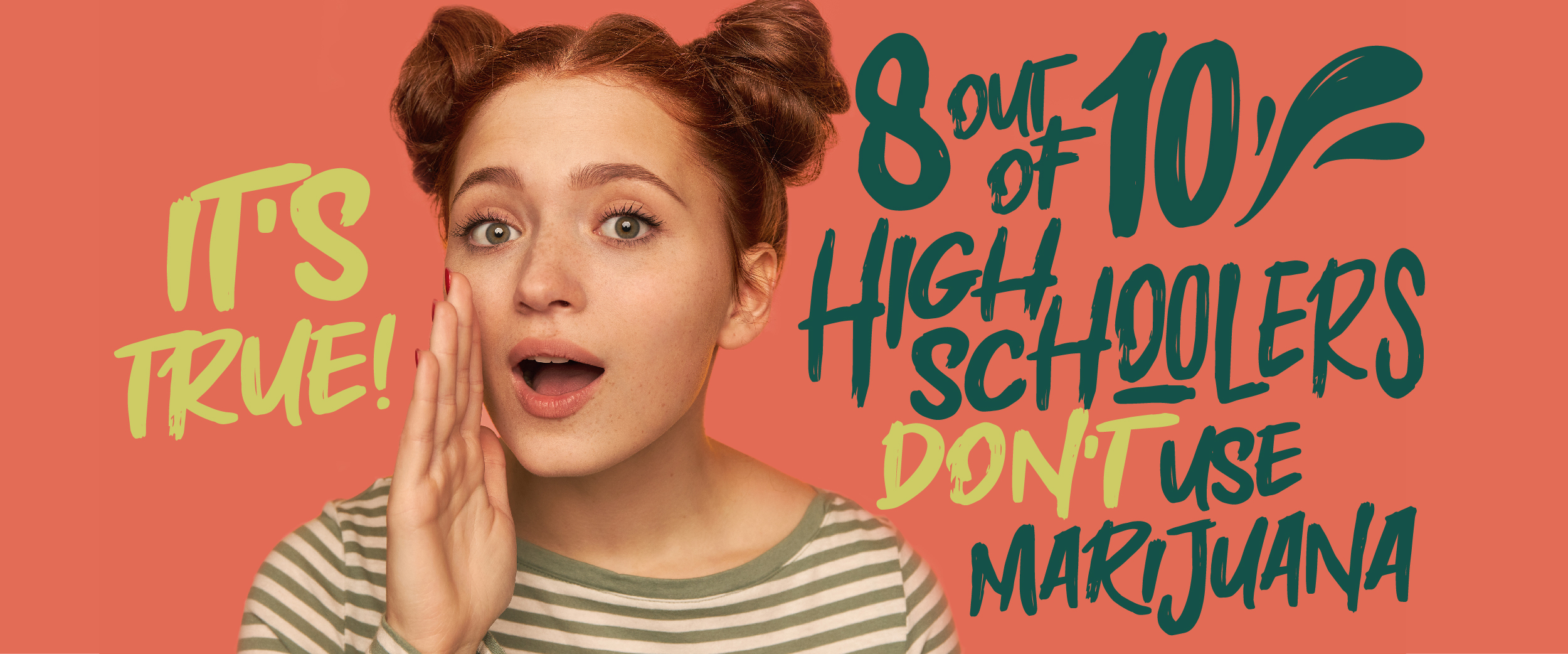

Chances Are,
your high schooler is one of the 8 who don’t use it.
To be clear on what we mean when we talk about marijuana (also called “cannabis”): Marijuana is a preparation of the cannabis plant intended for use as a psychoactive drug or medicine. THC—short for “tetrahydrocannabinol”—is the active ingredient in marijuana that changes the brain and makes people feel physical effects.
How is marijuana most commonly used?
Smoking
using pipes, water pipes (bongs), hand-rolled cigarettes (joints), or combined with tobacco to make blunts
Vaping
in which marijuana is heated to release its active THC, and the resulting vapor is inhaled
“Dabbing”
which means consuming high concentrations (60-80%) of THC, like hash oil, wax, and shatter
Edibles
containing THC, including candies, baked goods, teas, and sodas
Topicals
such as marijuana-infused lotions, salves, and balms, most of which contain THC and produce effects that can be felt for hours
Regardless of which side of the statistic your high schooler is on,
they’ll benefit from talking with you about the risks and consequences of using marijuana.
It’s important for them to not only understand your own family’s feelings and values around using marijuana, but also the larger impact of the choice to use marijuana on their brain, body, and mental/athletic performance.

Not sure where to start the conversation?
Here are some risks and lasting consequences of marijuana use that you can share:
Talking about marijuana risks and consequences could
drastically reduce the likelihood of your teen using (or continuing to use) marijuana.
For additional resources and support for getting the conversation started, check out:
